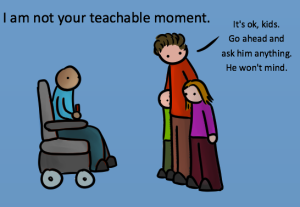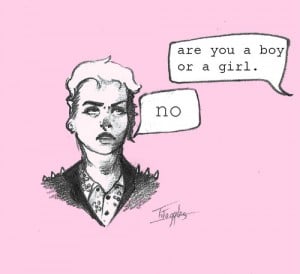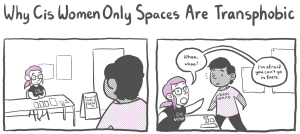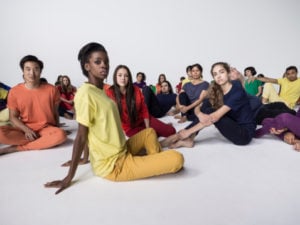In New York, San Francisco, Chicago, other major cites across the country, people are talking about gentrification.
Recently, I’ve been speaking to people randomly about gentrification, one thing I learned, is that people have generally heard the term, but they’re not quite familiar with what it exactly means.
One guy said, “Isn’t that when neighborhoods become new? Or is when they’re old, and they get kind of revitalized?” Our understandings of gentrification are quite confused. Defining gentrification merely as neighborhood improvement is overly simplistic. Gentrification is much more complicated.
I think most people think about gentrification in terms of the adaptive use of historic or dilapidated structures, like the highline, or the development of high rise, luxury buildings, the proliferation of retail, of all sorts, cafes, wine bars, and the like. Or the restoration of 19th century brownstones, or Victoria era homes.
While these factors are correlated with gentrification, they don’t truly define gentrification. The term gentrification refers to processes by which higher income or higher status people relocate to, or invest in, low income, urban neighborhoods. These and have historically been disinvested, by both the public and private sector, so as higher income people move to these areas, it’s typically to capitalize on the low property values.
In doing so, they inflate property values, displace low income people, and fundamentally alter the culture, and character, of the neighborhoods. Tom Slater, he’s an urban geographer, he describes gentrification as ‘the spacial expression of economic inequality,’ or the way in which inequality plays out in our neighborhoods and communities.
I think another point we have to remember is, gentrification is further confounded by the legacy of racial inequality, in America. The neighborhoods that are gentrifying across the country are disproportionately occupied by black and brown people. Thus, black and brown people are disproportionately being displaced, and typically they’re being displaced by the influx of white people.
This dynamic, you can imagine, causes all sorts of tensions. When we put gentrification to its appropriate context, and we understand that it’s a manifestation of inequality, it demands that we start thinking about preventative strategies, and policies, that can ameliorate gentrification.
In order to do that, we must first address some of the misconceptions. I’m going to address 3.
[1.] As I mentioned, gentrification is not the same as revitalization.
Revitalization refers to neighborhoods change, improvement, upgrading, but it’s done through a bottom up. It’s usually done with community residents, and community organizations, often with the help of public and private sector, but they’re improving housing, attracting businesses to the quarter, making the neighborhood safe and clean. The most important point, in revitalization, is that the neighborhood remains affordable for low income people.
[2.] The second point I want to address is perhaps the most adverse effect of gentrification, and that’s displacement.
I think experts generally agree that gentrification causes displacement. That’s not news to most of us. We debate over the magnitude of gentrification. Part of the issue is that there are different ways of thinking about displacement. There is both indirect displacement, and direct displacement. We also describe indirect displacement as exclusionary displacement, but first I’ll address the direct displacement.
Imagine that you’ve been living in a neighborhood, 5 years, 10 years. You’ve been paying anywhere between 80 and $2000 a month, and then suddenly your landlord tell you that when your lease is up in 60 days, your rent’s going up to $3000. When faced with a 50 or 65% increase in rent, what do you do? Most people have no choice. They have to leave. That’s direct displacement. Exclusionary displacement is actually more insidious.
Think of it this way. In many New York City neighborhoods, there are pockets of protected units, which we would refer to as rent controlled units, or rent stabilized unit, or even public housing, right? In those few units, people can actually remain in place.
Exclusionary displacement, then, refers to the sense of isolation that people feel when their family and friends have been displaced. Their social network may be eroded, although they can remain in place. It also refers to the sense of isolation people feel from the influx of high end restaurants, and boutiques, that they can’t afford. It’s great that your neighborhoods is aesthetically appealing, but if all you can do is window shop, it doesn’t feel so great. Again, another point that causes different forms of contestation.
The final point of exclusionary displacement refers to what happens over time. Over time, what we notice is that even people in the protected units decide to leave, and while it may be their own decision, they have agency in leaving, they’re leaving because the neighborhood feels unfamiliar. Their community feels unfamiliar. Again, we can imagine how all of these processes start to create conflicts on the ground.
[3.] The third point, with regard to gentrification, that I want to mention, is that gentrification is fundamentally a social justice problem.
It’s not a quasi collective good, in which most people benefit, only a few are made worse off. It’s quite the contrary. I think you all are quite familiar with our real estate market, and in cities like New York, they’re increasingly becoming destinations for investment in luxury real estate. At the same time, average New Yorkers can’t afford to remain in place.
Some people describe this process, or they look at this inflated real estate market, as a boon for the city. The property tax revenue is going up. However, if you think about the 10 year tax abatements that are associated with some of the new developments, or the generous subsidies, or the 20 year tax exemptions that real estate developers get, you can understand that the tax revenue that we expected is not actually accruing to the city. However, sales tax is going up, and that is good for the city, but it’s at a high price for a lot of people.
I think there are a number of studies out there, and we attempt to measure this things called gentrification, and its effect on different neighborhood outcomes, like schools, or crime. Again, there’s a lot of debate, and I think, in general, many studies have found that schools in gentrified neighborhoods are not improved, although crime is going down. However, crime is going down across the city.
Again, I think it’s a far more complicated dynamic. The debate about the measuring of gentrification is really only important when it comes to the statistical models that a lot of academics use, because the lived experience of gentrification is real, and it doesn’t vary with regard to the measures that we choose.
In a lot of the studies that I do, I think about the different neighborhoods across New York City that have gentrified over different periods. If I use different measure, inevitably I will come up with different outcomes, in terms of which neighborhoods have gentrified. Again, I fully understand that this is somewhat irrelevant when it comes to how people are experiencing gentrification. Understanding that gentrification is a social justice problem means that we should be thinking more critically about strategies, about progressive policies.
[Actions We Can Take]
I think it points to a set of actions that we can take. For instance, when talking, blogging, tweeting about gentrification, understanding it’s a social justice problem means not using glib comments like, “Well, neighborhoods always change.” This is not a natural process. Since gentrification is a problem that can be addressed, this isn’t something that we can’t do anything about. I’ll just list a couple of things we can think about.
For one, we can think about policies that implement some form of rent control.
We can think about policies that implement some form of progressive land tax, such that the income rental tax is used to support the most vulnerable renters. We can also think about restricting predatory investment schemes, and lastly, think about restricting these speculatory investment funds, that attract accredited investors to invest in these high growth neighborhoods. Bedford-Stuyvesant, Crown Heights, Harlem, Bushwick, and so forth.
Another thing we should be thinking about is thinking very critically about the representations of the neighborhoods that we’re saying are gentrifying, both in New York, and across the country.
We often use these very bleak and dire urban landscapes, to say, these neighborhoods are prime for unfettered development. I think once we put it in context we know that that’s not necessarily appropriate.
Finally, the final thing we need to think about, is acting early to prevent gentrification, to prevent displacement.
I say all that, but I recognize that everyone needs to live somewhere. My point here is really to get us to think more critically about gentrification, and what we can do. I’ll leave you with this. Because I think gentrification is fundamentally about social justice, and social justice is a value, I have an example that I want to share with you.
In 1992, when New York City was hungry for development, the department of city planning had the foresight to use land use rules, and zoning regulations, to ensure that our waterfront across the city would be accessible to all New Yorkers, into the future. The argument against such an action was that any kind of rule or regulation would stymie development. Well, it clearly didn’t, right? You know that didn’t happen.
What’s important there is that the department of city planning had a vision, they attached their vision to a value, and they acted so that we have access. Gentrification is something we do something about, we can use policy, but it really comes down to what we value, who we value, and how we want to act upon that. Thank you.




















